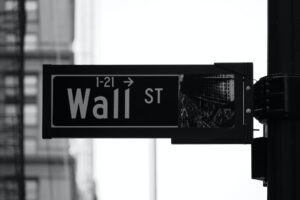Demo Forex vs. Live Trading: What You Need to Know
Forex trading is a complex and dynamic financial market that attracts millions of traders worldwide. It offers numerous opportunities to profit from the fluctuations in currency prices. Before diving into the live trading arena, many traders start with a demo Forex account to gain experience and test their strategies. However, there are significant differences between demo trading and live trading that traders need to be aware of. In this article, we will explore these differences and discuss what you need to know when transitioning from demo to live Forex trading.
1. Psychological Factors:
Perhaps the most significant difference between demo and live trading is the psychological aspect. When trading with a demo account, traders do not have real money at stake. This lack of emotional involvement can lead to a false sense of confidence and unrealistic expectations. On the other hand, live trading involves real money, which adds a layer of emotions and psychological pressure. Fear, greed, and impatience can cloud a trader’s judgment, leading to irrational decisions and potentially substantial losses. It is crucial to understand and manage these psychological factors when transitioning to live trading.
2. Execution Speed and Slippage:
Another key difference between demo and live trading is the execution speed and slippage. In a demo account, trades are executed instantly and at the displayed price. However, in live trading, there can be delays in order execution due to market volatility, network latency, or broker limitations. Moreover, slippage can occur, which means the executed price may differ from the expected price. These factors can significantly impact the profitability of trades, especially during high volatility events such as news releases or economic data releases. Traders need to be prepared for these differences and adjust their strategies accordingly.
3. Trading Costs:
While demo accounts provide a simulated trading environment with no costs involved, live trading involves various trading costs. These costs include spreads, commissions, and overnight swap fees. Spreads are the difference between the bid and ask price, and they represent the broker’s profit. Commissions are charged by some brokers on each trade, usually in the form of a fixed fee per lot. Overnight swap fees are incurred when holding positions overnight, as Forex trading involves borrowing one currency to buy another. These trading costs can significantly impact the profitability of trades and need to be taken into account when transitioning to live trading.
4. Market Liquidity and Execution Quality:
Demo accounts often provide traders with ideal market conditions, including high liquidity and tight spreads. However, in live trading, market conditions may not always be as favorable. During periods of low liquidity or high volatility, spreads can widen, and execution quality can suffer. This can result in slippage or requotes, where the broker asks for a new price due to significant price movements. Traders need to be aware of these differences and adjust their trading strategies accordingly.
5. Emotion Control and Risk Management:
In demo trading, the fear of losing money is absent, allowing traders to take higher risks and experiment with different strategies. However, in live trading, risk management becomes paramount. Traders need to control their emotions and implement proper risk management techniques to protect their capital. This includes setting stop-loss orders, using appropriate position sizing, and adhering to a trading plan. Without proper risk management, even a profitable trading strategy can result in significant losses.
In conclusion, transitioning from demo Forex trading to live trading requires a thorough understanding of the differences between the two environments. Traders need to be aware of the psychological factors involved, the execution speed and slippage, the trading costs, the market liquidity, and the importance of emotion control and risk management. By being prepared and adapting to these differences, traders can increase their chances of success in the live trading arena. It is recommended to start with a small trading account and gradually increase the size as confidence and experience grow. Remember, Forex trading is a journey, and continuous learning and adaptation are essential for long-term success.





